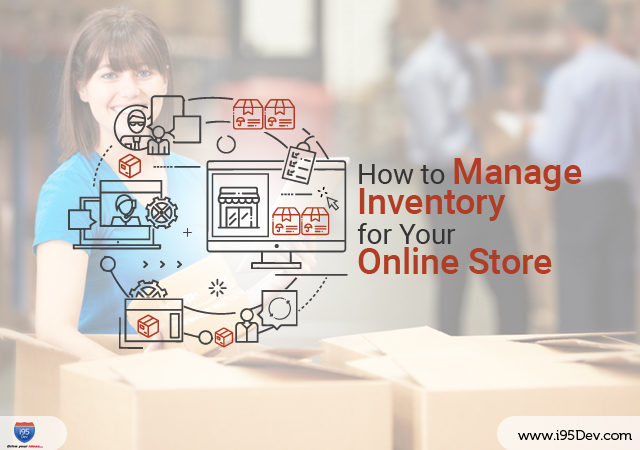How to Manage Inventory for
Your Online Store

In this post, we will discuss how to manage inventory for your online store, key strategies of inventory management and help you decide if Magento 2 is right for your business.
Syncing Across Channels
The first key strategy of successful inventory management is to sync your sales channels and the ERP system.
The most common obstacle in inventory management is the misalignment between sales channels and your ERP system. If your ERP system has inaccurate data regarding the inventory on hand, then you may overstock, understock, be unable to fulfill orders and ultimately frustrate your potential customers.
While it may be tempting to rely on overstocking to meet customer demand, there are several downsides: products can become obsolete, incur storage and insurance costs, tie up capital, and in the case of perishable goods can spoil.
On the other hand, running out of stock means you miss sales opportunities.
[bctt tweet=”The solution to all the inventory woes is to ensure inventory visibility throughout your ecosystem.” username=”i95Dev”]
The modern consumer demands instant access to products when online shopping. It is more important than ever to ensure that inventory is consistently visible count across all channels of your business so you can provide customers with this ability to self-serve 24/7, based on accurate and real-time data.
Inadequate inventory visibility throughout systems can result in:
- Delays in stock replenishment
- Idle stock
- Canceled orders
- Delayed shipping
- Poor reviews
- Damaged reputation
B2B and B2C businesses can avoid these pitfalls by integrating eCommerce with ERP to provide reliably accurate tracking of inventory on hand. With its cloud-based eCommerce and order management systems, Magento 2 provides efficient solutions to syncing your e-commerce platforms and ERP features, ensuring you always have an accurate picture of the inventory flow, without over or under-stocking.
A robust eCommerce platform also automates order syncs and purchase orders, ensuring you remain well stocked as inventory count approaches internal threshold levels. From this position of structural back-end alignment, businesses have the ability to integrate innovative strategies like “Buy Online and Pickup in Store” to move inventory faster and more efficiently, optimize fulfillment, and increase sales.
Magento 2 also offers Marketplace extensions to integrate your business with all of 2018’s most popular third-party marketplace accounts such as Amazon, eBay, Target, Jet, and Alibaba.
Integrating your business with marketplace accounts helps you achieve consistent inventory management across all channels and provide both your team and customers with a complete, bespoke distribution network that facilitates efficient inventory flow.
Leverage Inventory Analytics
The second most important inventory management strategy is to track analytics to inform inventory strategy and maximize profit. With the centralized customer, order, and inventory information, Magento 2 users are further empowered to increase their inventory productivity by:
- Tracking sales and inventory analytics
- Identify trends to accurately forecast sales
- Use predictive software to make informed orders
- Provide the most accurate information to customers to boost sales and profits
- Stock inventory accordingly
You can leverage this data to draw actionable insights like top sellers and product sales by channel and even validate future strategic and investment decisions, such as introducing new products or integrating new channels into your ecosystem.
Magento 2’s analytics features also enable you to offer added value to customers, for example by offering customized up-sells and cross-sells, and segmenting your storefronts, ensuring you showcase the appropriate products to each and every customer, further optimizing conversions.
The modern eCommerce ecosystem requires working parts that can sync between sales channels, track and leverage inventory analytics, and integrate across your omnichannel network. Having these components in place will aid you in seamlessly moving product from production to the end consumer and enable B2B and B2C companies to achieve their e-commerce aspirations.






